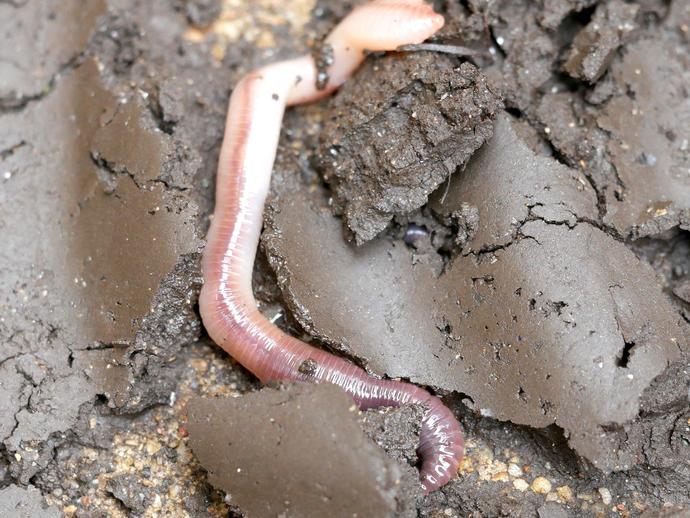March 19, 2021
Ben here with the Friday edition of #BenInNature presented by our friends at Carter Bank & Trust!
This fellow is Lumbricus terrestris, also known as the common earthworm or nightcrawler! These large, reddish earthworms are generally not the most common earthworms in a given area, but you're much more likely to encounter them due to their size and their propensity to come to the surface after a rainstorm. Unlike most earthworms, they also come to the surface to mate. Get a room, guys.
Like the dandelion we looked at earlier this week, nightcrawlers fall into the increasingly broad category of "things I always assumed were native to the U.S. but are actually an invasive species." Yes, believe it or not, these guys are native to Europe! They were likely introduced accidentally in the 1700s as stowaways in the soil of European plants brought to America. They aren't the only ones, either; about a third of the species of earthworms in the U.S. and Canada are non-native species, and that isn't a good thing.
That may seem surprising, because we're generally taught that worms are great for the environment; after all, they break up leaf litter and detritus and create rich soil, right? While all of that is true, in some places, these non-native species can be a bit too effective, which results in them outcompeting our native earthworm species.
Another problem is northern North American forests simply don't have earthworms, or at least they didn't before the invasives came along. In many of these forests, earthworms were wiped out during the Wisconsin Glaciation when massive ice sheets scoured the land down to the bedrock. As a result, these regions eventually formed forests with deep layers of organic matter, and the native plants have evolved to rely on these thick layers of detritus. Unfortunately, invasive earthworms like Lumbricus terrestris break down the organic layer, often transporting the nutrients deep into the soil where the plant roots can't reach them.
These earthworms are here to stay at this point, so there's not a whole lot to be done. My suggestion: go out digging for nightcrawlers and use them as bait. If you decide to blow off a social event and go fishing, you can just tell people that you really wanted to attend, but you're working on a special ecological project to reduce the number of non-native annelids. They probably will not ask any follow-up questions.
ABOUT #BenInNature
Social distancing can be difficult, but it presents a great opportunity to become reacquainted with nature. In this series of posts, Administrator of Science Ben Williams ventures outdoors to record a snapshot of the unique sights that can be found in the natural world. New updates are posted Monday - Friday, with previous posts highlighted on the weekends. This series of posts is made possible thanks to the support of VMNH Corporate Partner Carter Bank & Trust (www.cbtcares.com)
NATURE PHOTO IDENTIFICATIONS
If you discover something in nature that you would like help identifying, be sure to message us right here on Facebook with a picture (please include location and date of picture) and we'll have our experts help you identify it!

 Hours & Admissions
Hours & Admissions Directions
Directions

